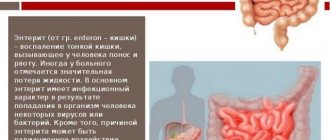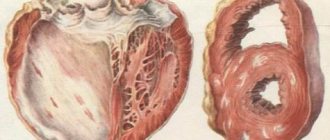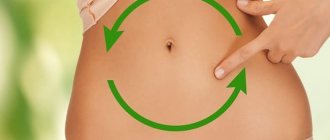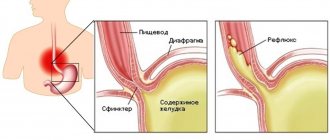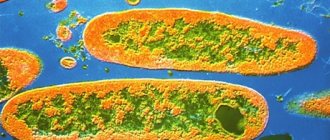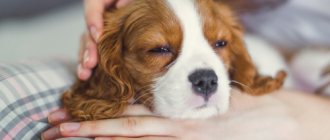Otitis
is the general name for any inflammation localized in the ear.
Our ear is a complex organ, the structure of which can be divided into three parts: the outer ear, which includes the pinna and the ear canal to the eardrum, the middle ear (the cavity behind the eardrum) and the inner ear. Accordingly, three types of otitis are distinguished: external otitis
,
otitis media
(or inflammation of the middle ear) and internal otitis (
labyrinthitis
) - a serious but rare disease.
Doctors also talk about right-sided
or
left-sided otitis media
, depending on which ear has inflammation.
If the inflammatory process affects both ears, a diagnosis is made - bilateral otitis media
.
What is otitis media?
Otitis is an inflammation of the ear. The disease can be chronic or acute, purulent or catarrhal. The severity of the pathological process depends entirely on the virulence of microorganisms, and the state of the human immune defense also plays an important role.
Statistics say that 30% of all otolaryngological diseases are acute forms of otitis media. Preschool children get sick much more often than adults. By the age of three, 80% of children experience otitis media.
The organ of hearing can be affected, causing otitis media, by:
- Pneumococci;
- Streptococci;
- Staphylococcus;
- Haemophilus influenzae and other microorganisms.
Any ear inflammation is extremely dangerous, and you should consult a doctor immediately after detecting the symptoms of the disease described below.
Symptoms of otitis media
Symptoms of otitis media, by which acute otitis media can be recognized, are the following: severe pain in the ear (according to patients, it is described as shooting), fever, and after 1-3 days - purulent discharge from the ear canal. After the appearance of pus, the patient’s condition usually improves, the temperature drops, the pain becomes less pronounced or disappears altogether.
Pus is released from the rupture of the eardrum. This outcome of the disease is considered positive; with proper treatment, the hole in the eardrum gradually heals without affecting hearing.
If the disease develops unfavorably, the pus cannot find a way out, and this risks that the infection may begin to spread inside the skull. Such otitis media can develop into meningitis, as well as into a brain abscess. In order to avoid such terrible consequences, at the first symptoms of otitis media, contact an otolaryngologist for consultation and proper treatment.
Otitis, depending on the location of the inflammation, can be:
- External;
- Average;
- Internal.
Swimmers often suffer from otitis externa, which is why the disease is popularly called “swimmer’s ear.” Inflammation begins due to mechanical trauma to the auricle or external auditory canal. Damage to the protective cover leads to the entry and proliferation of pathogenic microorganisms, then a boil forms at this location.
If appropriate treatment is not immediately carried out, otitis externa becomes severe and spreads to the parotid cartilage and bones. With this type of disease, the patient is bothered by aching, throbbing pain, swelling of the ear and a moderate increase in temperature.
With otitis media, the inflammatory process spreads to the air spaces of the middle ear, located immediately behind the eardrum: the tympanic cavity, the auditory tube and the mastoid process.
The form of otitis media often progresses from catarrhal to purulent.
Acute catarrhal otitis of the middle ear occurs as a complication of acute respiratory infections or acute respiratory viral infections, after the penetration of the infectious agent into the tympanic cavity. At the initial stage, hearing levels may decrease and tinnitus may appear, but the temperature remains normal or slightly increases.
If these symptoms are ignored, then catarrhal otitis media manifests itself as a sharp and severe increase in temperature and shooting pain in the ear, spreading to the eye, neck, throat or teeth. Such otitis can be cured only by getting rid of the infection, for which you need to urgently consult a doctor.
Acute purulent otitis media of the middle ear is an advanced catarrhal form. The disease is manifested by a rupture of the eardrum and leakage of pus, followed by a decrease in body temperature. Treatment, in addition to fighting the infection, should include permanent removal of pus from the ear, which can only be done by a healthcare professional.
In addition, pus may not always come out on its own. If the eardrum is very strong, surgery is needed to pierce the eardrum. This procedure is called “paracentesis” and is carried out using a local anesthetic: a puncture is made with a special instrument at the most favorable point, and the pus is completely drained.
Once the pus is removed, the eardrum is scarred and the quality of hearing is not further reduced.
If acute otitis media is not treated, pus spreads inside the skull. As a result, internal otitis develops, affecting the vestibular apparatus, causing a brain abscess and leading to at least partial or complete hearing loss. Therefore, at the first signs of otitis media, you should not try to drop anything into your ears, or put a tampon with alcohol or other antiseptic, but you should urgently go to the doctor!
Folk remedies: warming up
Heat helps relieve pain from infection, promotes maturation of the abscess and reduces inflammation in the ear. Warming should not be used by people suffering from hypertension. Below are simple but effective ways to warm up.
Oil heating
Mix chamomile oil, lavender, tea tree and almond oil in equal proportions. Heat the resulting mixture in a water bath to approximately 40 degrees. Place the medicine in the ear canal twice a day, three drops. Treatment should be continued until signs of the disease disappear, but no more than four days.
Warming up with a hot damp towel
You need to lie down with your sore ear on a hot, damp towel. As the towel cools, immerse it in hot water again, wring it dry and repeat the procedure. You should lie on a towel for up to fifteen minutes, the procedure is repeated three times a day for five days.
Warming up with a boiled egg
This method is effective in cases where ear inflammation is accompanied by the formation of pus. A hard-boiled egg is wrapped in a clean linen or cotton cloth and applied to the sore spot. The ear is warmed with a boiled egg three times a day for ten minutes, the procedure continues for five days.
Warming up with rock salt
Heat coarse rock salt in a cast iron skillet. Pour the salt into a cotton bag, which you can also wrap with a thin towel to start with to avoid burns. Apply salt to the diseased organ. The advantage of this method is that the salt retains heat for quite a long time, so it is suitable for pediatric patients or for use at night. The salt is kept near the auricle for fifteen minutes, and the heating is repeated three times a day. Treatment is continued for five days.
Warming up with sugar smoke
Melt one tablespoon of granulated sugar in a metal bowl and bring it to a boil. As soon as smoke begins to emanate from the sugar, you need to bring a paper cone to the bowl with the wide end, trying to capture the smoke into it. The other, narrow end of the cone is inserted into the ear. The procedure continues for 5-10 minutes until the smoke stops. After this, the cone is removed and a cotton swab is inserted into the ear. The procedure is done once a day for five days.
Warming up with warm air from a hair dryer
The hair dryer is set to hot air drying mode at the lowest power. The air flow is directed into the ear canal at a slight angle, while the device itself is kept at a distance of 20 cm from the ear. Warm up the ear in this way twice a day for three minutes. Treatment continues for 5 days.
Summary table on the use of heat treatment
| Treatment method | Duration, min | Number of times per day | Amount of days |
| Oil heating | 3 | 2 | 4 |
| Warming up with warm air from a hair dryer | 2 | 3 | 5 |
| Warming up with a hot damp towel | 15 | 3 | 5 |
| Warming up with rock salt | 15 | 3 | 5 |
| Warming up with a boiled egg | 10 | 3 | 5 |
| Warming up with sugar smoke | 5-10 | 1 | 5 |
Causes of otitis media
Every ENT disease is accompanied by increased mucus production. As its quantity increases, under unfortunate circumstances, mucus enters the Eustachian tube, disrupting the ventilation of the tympanic cavity. The cells of the tympanic cavity secrete inflammatory fluid. In addition to clogging the lumen of the Eustachian tube, pathogenic microorganisms that are normally part of the local microflora also contribute to the aggravation of inflammation.
The causes of otitis are considered:
- Penetration of infection from other ENT organs - as a complication of a concomitant infectious viral disease;
- Various diseases of the nose, sinuses and nasopharynx. This includes all types of rhinitis, deviated nasal septum, and in children - adenoids (adenoid vegetations);
- Injuries to the ear;
- Hypothermia and weakened immunity.
Complications and consequences of otitis media
Although only the ears hurt with otitis media, complications with inadequate or no treatment can affect many organs. Incomplete treatment of otitis leads to very dire consequences - suppuration spreads to the lower jaw, affecting the salivary gland and often leading to disability.
But what makes otitis even more dangerous is that this disease is not always easy to identify. For example, in some cases the disease is not accompanied by acute pain in the ears. Often, otitis media disrupts the functioning of the gastrointestinal tract. This is explained by the fact that our abdominal region and ear are connected by one nerve. Therefore, during otitis media, especially in a child, the intestines may swell, vomiting, and constipation may occur. That is, appendicitis may be suspected, in which case you will be referred to a surgeon. But the diagnosis of inflammatory diseases in young children must be carried out with the participation of an ENT doctor.
If a mother believes that her child simply has a disorder of the gastrointestinal tract and undertakes independent treatment, then otitis media in the meantime can develop into a more serious disease - otoanthritis. This is a situation in which pus moves into the area behind the ear and another inflammation occurs, as a result of which the ears protrude externally, swelling appears and the temperature rises again. A complication can occur either in the next few days or in a month, that is, it cannot be predicted. If these symptoms of otitis media are not noticed, then meningitis will develop in a couple of months, so be careful with otitis media.
Other common complications of otitis include transition to the chronic stage, damage to the vestibular apparatus and hearing loss.
In addition, complications of otitis may include:
- Meningitis and other intracranial complications (brain abscess, encephalitis, hydrocephalus) are the next stage after otoanthritis if measures are not taken in time;
- Facial nerve paresis;
- Rupture of the eardrum and filling of the ear cavity with pus;
- Cholesteatoma - blocking of the ear canal with a tumor-like cyst-like formation in the form of a capsule with dead epithelium and keratin;
- Mastoiditis is an inflammation of the mastoid process, causing destruction of the auditory ossicles in the middle ear;
- Gastrointestinal dysfunction - bloating, vomiting, diarrhea;
- Persistent hearing impairment, hearing loss (up to complete deafness).
Chronic otitis is extremely difficult to treat and greatly reduces the quality of life - hearing is impaired, there is a constant inflammatory process in the ears and suppuration occurs. Often, to get rid of chronic otitis in adults, conservative treatment is not enough, and you have to resort to surgery.
Classification of the disease according to the nature of its course.
There are many classifications of diagnosis. We will dwell on a few in more detail.
Based on duration, the disease is divided into three forms: acute, subacute and chronic. The acute form lasts no more than three weeks. If the disease does not go away within three months, then we are dealing with a subacute variation of the disease. Chronic inflammation is characterized by sluggish symptoms that prevent an adult from leading a full lifestyle for more than six months in a row.
Based on the type of causative agent of the disease, the following types of disease are distinguished:
- bacterial - when the cause of infection is bacteria;
- viral - provoked by viruses;
- fungal - the causative agents are fungi;
- allergic - manifests itself against the background of the action of allergens;
- traumatic - due to damage to the hearing organ (more often occurs when improperly manipulating a cotton swab when cleaning the ears or a pressure drop during diving or air travel).
There is an exudative type of disease, when fluid is released from the ear cavity, catarrhal (no discharge, but severe swelling is present) and purulent. Purulent otitis is accompanied by discharge from the organ of hearing and is fraught with complications.
If the inflammatory process occurs in the right ear, we talk about right-sided inflammation, if in the left ear, we talk about left-sided inflammation. The most difficult course is for bilateral ear lesions.
Diagnosis of otitis
A competent doctor diagnoses acute otitis without special devices and innovative technologies. A simple examination of the auricle and ear canal using a head reflector (a mirror with a hole in the center) or an otoscope is sufficient to diagnose otitis media.
How is otitis externa diagnosed?
With external otitis, the doctor pays attention to the skin in the area of the auricle, the size of the ear canal and the discharge from it. If the ear lumen is severely narrowed, especially if the eardrum is not even visible, the skin is red, and liquid discharge is noticeable inside the ear, this allows the doctor to diagnose “otitis externa.”
How is otitis media diagnosed?
Acute otitis media is also diagnosed largely by external examination. The doctor is guided by some characteristic signs of this disease: a reddened eardrum, limited mobility and the presence of perforation.
All these symptoms are easy to check - the patient just needs to puff out his cheeks without opening his mouth. Ear blowing, a technique called the Valsalva maneuver, is routinely used by divers and divers to equalize pressure in the ear during deep-sea descent. As air enters the tympanic cavity, the membrane bends noticeably, and if the cavity is filled with liquid, then there will be no bending.
Perforation in the eardrum during otitis media is noticeable to the naked eye after the ear cavity overflows with pus and flows out during a breakthrough.
Clarification of the diagnosis of “internal otitis”: audiometry
A hearing test using a special device - audiometry, as well as measuring pressure inside the ear - tympanometry - is used to clarify the diagnosis if chronic otitis is suspected.
If hearing acuity during ongoing otitis media drops sharply and attacks of dizziness begin, there is a reasonable suspicion of internal otitis (inflammation of the ear labyrinth). In this case, audiometry is used, the help of an otolaryngologist and a neurological examination are used.
X-ray and computed tomography
Radiography for acute otitis is used to confirm its complications - severe intracranial infections or mastoiditis. These are quite rare cases, but if these dangerous complications are suspected, a CT scan of the brain and temporal bones of the skull is necessary.
Determination of bacterial flora in otitis media
Bacterial culture for otitis media, at first glance, seems like a pointless study. After all, it takes time to cultivate bacteria, and the result of the analysis will be visible only on the 6-7th day, and if timely treatment of otitis is carried out, the disease should already have passed by this time. But the usual antibiotics do not help in all cases of otitis, and if the doctor knows from the results of the smear which microorganisms caused the otitis, he will prescribe a known appropriate drug.
Prevention of subsequent pathologies
To avoid the appearance of otitis media and its complications, it is necessary to carefully treat any cold along with other respiratory infections until complete recovery. A runny nose especially contributes to the appearance of otitis media. The best means of prevention, of course, is hardening. To begin with, daily baths with rubbing down to the waist with cold water are quite suitable.
In order to strengthen the children's body, you need to keep the kids undressed on the street for several minutes. In winter, an ordinary room will do. If a child has suffered a serious illness, he must be regularly examined by a doctor. You also need to monitor your nasal breathing. Its violation can cause various pathologies, including otitis media. Measures to help prevent otitis media with its complications are as follows:
- Maintaining a healthy diet.
- Frequent walks in the fresh air.
- Presence of humid air in the room.
- Physical activity.
If you are concerned about chronic otitis media along with other respiratory diseases, you must adhere to the following rules:
- While taking a bath, you should avoid getting water into your ears.
- Always treat tonsils with runny nose.
- Do not do heavy physical work.
- If possible, do not go outside in severe frost or windy weather.
- Wear an appropriate hat and cover your ears during the cold season.
These basic rules will certainly help to avoid consequences after otitis media, even for those people who are at risk.
What to do with otitis media?
As soon as discomfort appears in the ears, be it periodic congestion or aching pain, you should immediately consult a doctor for competent treatment. Otherwise, acute otitis media will most likely turn into chronic, leaving behind scars, thinning, retractions or a gap on the eardrum, after which the patient will experience frequent inflammation and hearing loss.
If it is impossible to see a doctor on the same day when the pain appears, then the only thing that can be done is to use antihistamines internally (by reducing the pressure in the ear, the pain subsides), and for severe pain, painkillers.
Attention: camphor oil, chamomile infusion, boric alcohol, onion and garlic juice or phytosuppositories - any of these “healing” drugs for the treatment of otitis media can lead to deafness for life. The same goes for warming with sand, salt or a heating pad. The inflammatory process in the ear will intensify several times, because these folk remedies provide bacteria with food and accelerate their reproduction, causing the accumulation of pus and severe swelling. Alcohol-based antiseptics are especially dangerous for children with delicate, sensitive mucous membranes.
But the worst thing is that pus gets into the brain, leading to irreversible consequences - a person can remain disabled forever!
How to treat otitis?
Regardless of the form of otitis, the patient requires painkillers, since the ear pain is unbearable. These are usually non-steroidal anti-inflammatory drugs, the most commonly prescribed today is ibuprofen. While taking NSAIDs, the patient should be under constant medical supervision.
How is otitis externa treated?
If otitis externa is found in adults, the main treatment will be with ear drops. In a healthy person with normal immunity, otitis externa will go away using only drops; antibiotics in injections or tablets will not be needed. Drops can consist only of an antibacterial drug, or they can combine an antibiotic and an anti-inflammatory drug. Otitis externa is treated with drops for an average of a week.
Basically, for the treatment of external otitis the following is prescribed:
- Antibiotics – norfloxacin (Normax), ciprofloxacin hydrochloride (Tsiprolet), rifamycin (Otofa);
- Antibiotics with corticosteroids – Candibiotic (beclomethasone, lidocaine, clotrimazole, chloramphenicol), Sofradex (dexamethasone, framycetin, gramicidin);
- Antiseptics (Miramistin);
- Antifungal ointments - clotrimazole (Candide), natamycin (Pimafucin, Pimafucort) - are prescribed if otitis externa is of fungal origin.
Among the recently proven products, an ointment with the active ingredient “mupirocin” is used, which does not have a pathological effect on the normal microflora of the skin, but is active against fungi.
How is acute otitis of the middle ear and auditory labyrinth treated in adults?
Antibiotics
Otitis media is usually treated with antibacterial drugs. But the treatment of otitis media in adults is slightly different from the treatment of a childhood disease - the rate of spontaneous recovery from otitis media in an adult is more than 90 percent, which practically negates the need for the use of antibiotics. But the remaining 10 percent have very serious consequences, so if after the first two days of the disease there is no improvement, then antibiotics are prescribed.
Antibiotics should be prescribed by a qualified physician, as this class of drugs is extremely dangerous due to side effects. However, mortality from complications of otitis reaches 28,000 people per year, so, as a rule, treatment is justified. Antibiotics are usually prescribed in tablet form, but if the patient cannot take a tablet, injections are used.
To treat otitis media in adults, use:
- Amoxicillin (Flemoxin Solutab, Ecobol, Ospamox or Amosin);
- The combination of amoxicillin with clavunalic acid (Flemoklav, Augmentin, Ecoclave);
- Cefuroxime (Cefurus, Aksetin, Zinnat, Zinacef).
It is possible to prescribe other drugs, but it is important to comply with the basic requirement of antibiotic therapy: complete a course of treatment that lasts at least a week. If the microorganisms do not die out due to interruption of antibiotics, the bacteria develop resistance to this group of drugs, and the antibiotics stop working.
Ear drops for otitis media
Comprehensive treatment of otitis media often includes the use of drops. It is extremely important to know that not all ear drops are created equal, and if your ear hurts, not just any drop will do. The difference is that before the damage to the eardrum and after its perforation, the active substance for the treatment of otitis media is completely different.
If the eardrum is intact, then use anesthetic drops - Otipax, Otinum or Otizol - with lidocaine, benzocaine or choline salicylate. In the catarrhal form of otitis media in adults, antibiotic drops will not help at all, since the substance does not reach the source of inflammation - behind the eardrum.
When the pus has burst out and the tympanic cavity is open, on the contrary, drops with an anesthetic effect are contraindicated, as they can lead to undesirable consequences. Moreover, as the pus drains, the pain subsides.
To prevent repeated suppuration or penetration of pus into the inner ear, antibiotics are prescribed to be dripped into the open tympanic cavity - these are Normax, Cipropharm, Miramistin and others; only a doctor should prescribe them. The use of ototoxic antibiotics, alcohol-based drugs, phenazone or choline salicylate is strictly prohibited.
On the subject: Antibiotics and drops in the ears for otitis media
Paracentesis of the tympanic membrane is a last resort
When therapeutic treatment of otitis media with medications does not have an effect, a large amount of pus accumulates behind the eardrum. This leads to very severe pain and increased absorption of bacterial waste products into the blood. General intoxication of the body occurs. As soon as such symptoms appear, doctors urgently prescribe paracentesis - an operation that prevents severe complications of otitis media.
The operation is performed under local anesthesia. During paracentesis, the eardrum is cut with a special needle in the thinnest place in order to minimize tissue trauma, and pus flows out through the resulting hole. Moreover, a carefully incised wound heals much faster than a hole with natural perforation, and after paracentesis a minimal scar is formed.
The next day there is a sharp improvement in well-being and the patient’s recovery accelerates. This is especially true for paracentesis in the treatment of otitis media in children.
Urgent paracentesis is indicated for:
- Inflammation of the inner ear;
- Damage to the meninges, manifested in the form of headache and nausea;
- Damage to the facial nerve;
- If within three days after the start of antibiotic therapy the pain does not subside and the suppuration does not subside.
Unlike external or otitis media of varying severity, inflammation of the auditory labyrinth is treated comprehensively, and only in a medical facility under the constant supervision of a neurologist and otolaryngologist. To treat the labyrinth, not only antibiotics are required, but also neuroprotectors and drugs to improve blood microcirculation in the inner ear.
[Video] Dr. Berg - The best NATURAL REMEDY for otitis media:
On the subject: Treatment of otitis media at home
Herbal medicine
Onion
Fresh onions are grated and then the juice is squeezed out. The juice should not be instilled into the ear canal; it is used to lubricate the tissue around the diseased area. A gauze bandage should be placed on the lubricated tissue, and secured on top with an insulating bandage. Onion phytoncides will penetrate the skin and reduce inflammation and pain. The process is repeated twice a day, treatment continues until cure.
Ginger.
Rinse fresh ginger root under running water and rinse with boiling water. Peel the rhizome. Grind the ginger on the finest grater or use a blender for this. Squeeze the juice from the resulting mass. Place 2 drops into the ear canal twice a day. Continue treatment for five days. The effective anti-inflammatory effect of ginger will help quickly relieve pain and relieve the severity of the disease. The squeezed cake can be added to brewed tea and consumed throughout the day as needed.
Bay leaf
Place five medium-sized bay leaves into 200 ml of boiling water, cook for 5 minutes and leave to cool to room temperature. Strain the resulting decoction and instill 2-3 drops into the sore ear three times a day. Instillation should be repeated for four days.
Aloe
Large fleshy aloe leaves are used to extract juice, which is diluted with the same amount of boiled water. We moisten cotton wool pads generously in the resulting solution and insert them into the ear canal for 15-20 minutes. Treatment is carried out twice a day in the morning and evening for four days.
Garlic
Garlic is a well-known healer of those ailments associated with various types of infections. A clove of garlic is crushed, the juice is squeezed out of it, which is mixed with a comparable amount of olive oil. Warmed drops are injected into the ear canal of the diseased organ, 1-2 drops twice a day. Treatment continues for five days.
Geranium
Fresh geranium leaves are an excellent decongestant and anti-inflammatory agent. The torn leaf is kneaded until pliable, and then rolled into a turunda and placed in the ear. Keep green turundas in the ear for 20-30 minutes. Turundas need to be inserted three times a day. The procedure should be repeated for seven days. This remedy significantly reduces pain.
On a note! You cannot use geranium, which blooms with huge caps of inflorescences of different colors! Geranium suitable for the treatment of otitis must be of a special variety with small blue flowers. Only this type of geranium can be used as a remedy.
Summary table on the use of treatment in the form of herbal remedies:
| Treatment method | Number of drops | Number of times per day | Amount of days |
| Ginger | 2 | 2 | 5 |
| Onion | 2 applications | 2 | Treatment continues until cure |
| Garlic | 1-2 | 2 | 5 |
| Bay leaf | 2-3 | 3 | 4 |
| Aloe | 15-20 min | 2 | 4 |
| Geranium | 20-30 minutes | 3 | 7 |

